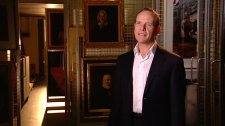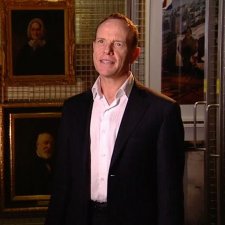Sir Henry Barkly GCMG KCB (1815–1898) served terms as governor of British Guiana and Jamaica before being appointed governor of Victoria in 1856, arriving in the colony just a few weeks after the first sitting of its newly created parliament. Over the next six years Barkly’s priority was securing stable government, but he was also a strong supporter of philanthropic and intellectual movements. He was a founder and President of the Royal Society of Victoria, and helped to found the National Gallery, the Acclimatization Society and the National Observatory. It was Barkly who proposed – in 1861 – that the Victorian Exploring Expedition should be known henceforth as the Burke and Wills Exploring Expedition. In 1863 he became Governor of Mauritius; seven years later he was sent to the Cape of Good Hope. In retirement, as an elected Fellow of the Royal Society and the Royal Geographical Society, he applied himself to science.
Thomas Clark arrived in Victoria in about 1852, having been anatomical draftsman at King’s College London and headmaster of the Birmingham School of Design. By the 1860s he was teaching at the Artisans’ Schools of Design in Carlton and Collingwood, and becoming known for his landscapes of the Melbourne area. Clark painted Barkly on commission. This work is a study for the final colossal portrait, which lacks a horse.
Collection: National Portrait Gallery
Purchased with funds provided by The Ian Potter Foundation 2007
The Ian Potter Foundation (13 portraits supported)



On one level The Companion talks about the most famous and frontline Australians, but on another it tells us about ourselves.



An interview with former National Portrait Gallery Director, Andrew Sayers, who describes the portrait of Sir Henry Barkly by Thomas Clark.



Visit us, learn with us, support us or work with us! Here’s a range of information about planning your visit, our history and more!